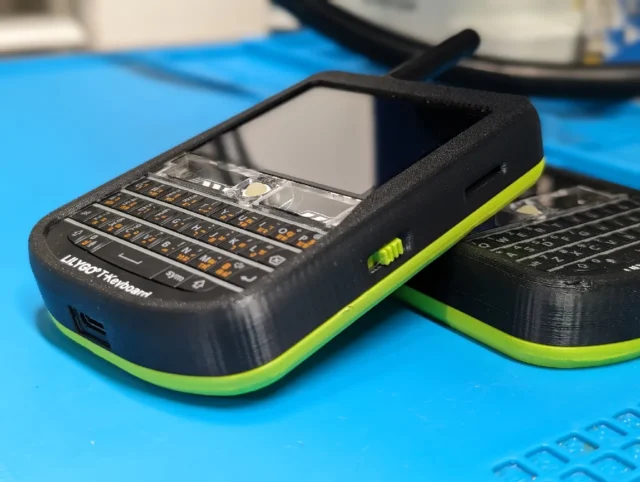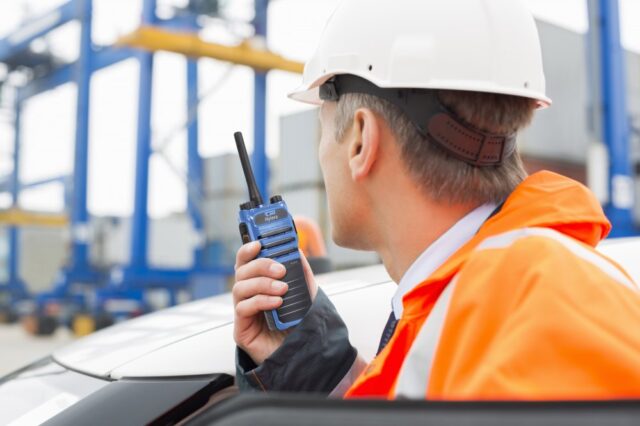In sprawling industrial settings like factories, mines, and refineries, knowing where people are at any given moment isn’t just helpful—it can be lifesaving. For decades, handheld radios have been the go-to communication tool on worksites. They’re rugged, reliable, and support instant voice communication across teams. But one thing they can’t do out of the box? Tell you exactly where someone is.
That’s changing fast. More and more organizations are combining radio communication with indoor positioning to track worker locations in real time. From improving emergency response to enforcing safety zones, location-aware radios are transforming industrial operations.In this guide, we explore the most common indoor positioning technologies for handheld radios, compare their pros and cons, and share a real-world case study that shows how these systems work in practice.Why location matters for handheld radiosStandard radios are great for voice, but blind to position. That’s a problem when:
- You need to find someone quickly during an emergency
- Supervisors want to dispatch the nearest available worker
- Safety protocols require monitoring of hazardous zones
Indoor environments complicate things—GPS doesn’t work well inside buildings or underground. So alternative positioning systems are needed to close the gap.Technologies for indoor radio positioningThere are several technologies being used to track radio users indoors. Each comes with trade-offs around accuracy, cost, infrastructure, and battery life.
- Ultra-Wideband (UWB): Offers pinpoint accuracy (10–30 cm) and works well in cluttered spaces. Uses fixed anchors and tags on radios.
- Pros: High precision, low interference
- Cons: High setup cost, needs infrastructure
- Bluetooth Low Energy (BLE): Uses beacons placed around the facility. Radios detect signal strength to estimate location.
- Pros: Affordable, energy-efficient
- Cons: Accuracy varies (1–3 m), signal can be unstable
- RFID (Active/Passive): Good for zone tracking—e.g., knowing someone entered a room. Active RFID gives real-time updates.
- Pros: Simple and scalable
- Cons: Not ideal for continuous tracking
- Wi-Fi positioning: Uses existing Wi-Fi signals and maps to guess location.
- Pros: Uses existing networks
- Cons: Less accurate, requires frequent calibration
- Inertial sensors (IMUs): Detect movement and direction changes—good for short-term tracking.
- Pros: No infrastructure needed
- Cons: Drifts over time, often combined with other systems
Quick comparison
| Tech | Accuracy | Cost | Needs Setup? | Battery Use | Best For |
|---|---|---|---|---|---|
| UWB | ~10–30 cm | High | Yes | Medium | Critical zone tracking |
| BLE | ~1–3 m | Low | Yes | Low | Proximity, room-level |
| RFID | Zone only | Low | Yes | Very low | Entry/exit tracking |
| Wi-Fi | ~5–15 m | Low | No (if Wi-Fi) | Medium | Rough location estimates |
| IMU | Varies | Low | No | High | Short-term tracking |
How radios become location-awareSome advanced digital radios (DMR, TETRA) now support positioning modules inside the radio, or paired external tags. These modules collect location data and send it over the radio network along with voice.Location software in a control room visualizes worker movement, sets up alerts, and logs history. Hybrid systems—e.g., BLE for general tracking and UWB in hazardous areas—offer the best of both worlds.Challenges to watch for
- Metal-heavy environments can mess with signals
- Battery life drops with constant tracking
- Privacy concerns require clear policies
- Regular maintenance needed for sensors and anchors
Real-world success: BLE + UWB at a chemical plantA European chemical plant had solid radio coverage but no visibility into where workers were during maintenance. They added BLE beacons across the site and UWB anchors in hazardous zones.Radios with BLE/UWB modules now report real-time positions to the central command via the TETRA network.Results:
- Response times in drills improved
- Safety zone violations dropped sharply
- Supervisors assigned tasks based on who was closest
- Investigations used movement history to understand incidents
Beyond buildings: blending indoor and outdoor trackingIn mixed environments, combining indoor systems with GPS creates seamless coverage. Radios can switch automatically or rely on backend software to merge the data.Private LTE, LoRa, and 5G are being used to bridge coverage gaps across sprawling facilities.Keeping it legal and ethicalTracking people comes with responsibility:
- Be transparent with staff
- Limit who can see location data
- Don’t keep data longer than needed
- Get buy-in from workforce reps early
What’s next in radio positioning?
- Smarter tracking with AI: More accurate location using pattern learning
- SLAM mapping: Keeps maps updated even in changing environments
- Smaller chips: Easier to fit into compact radios
- Cloud dashboards: Combine sites into one view
- Sensor fusion: Mix of RF, motion, and camera inputs
Tips for getting started
- Start small—pilot in one area
- Talk to end-users early
- Check battery impact before scaling
- Combine technologies for best coverage
- Plan for regular calibration and upkeep
Location-aware radios are helping industrial sites become safer and smarter. The tech is mature, the use cases are proven, and the benefits are real. Whether you’re looking to protect workers, speed up response, or improve oversight—bringing positioning into your radio system is a smart step forward.
Image(s) used in this article are either AI-generated or sourced from royalty-free platforms like Pixabay or Pexels.
Did you enjoy this article? Buy me a coffee!






